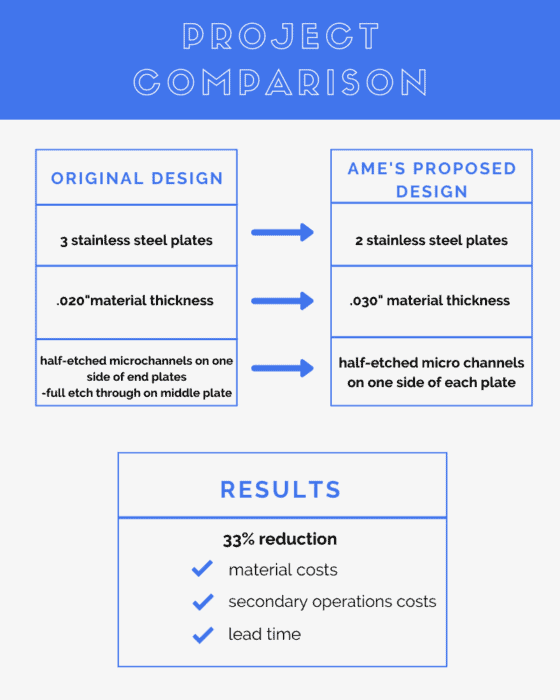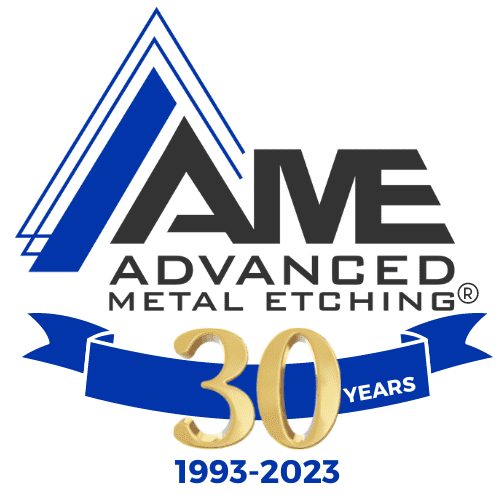Heat Exchanger Plate Case Study
Customer Profile:
A US manufacturer that specializes in furnace brazing services for metal plates used in thermal management devices
The Opportunity:
We were approached by a brazing services customer who needed three heat exchanger plates etched with channels for helium gas transfer. They planned to braze all three plates for their customer, who manufactures high-performance ceramic heaters used in the semiconductor, consumer, aerospace, and defense industries.
Like all heat transfer plates, the channels are needed to move fluids and gases through thermal management systems to regulate heat in and out of the devices. They came to us because the chemical etching process efficiently creates micro cooling grooves or channels that are half-etched into the material. Also, during the same production run, our etching process can manufacture etched through openings for inlet and outlet sources. With other manufacturing processes like laser cutting and wire EDM, the lead time and cost would be higher due to creating each channel and hole. Etching is a simultaneous operation where all the features are manufactured in one production run quickly and without the threat of thermal or stress deformation.
The Challenge:
From a manufacturing and design standpoint, there were three crucial requirements.
- The plate's channels needed to be a particular size in-depth and width for helium gas to flow evenly through the plate for optimal cooling and prevent leakage.
- The final design must pass a helium leak test administered by a testing services company before the final brazing process.
- Because there were outsourced testing services involved, the project's costs must remain within budget.
With all of this in mind, we knew that we would have to come up with solutions to manufacture these plates efficiently, economically, and ensure it passes the helium leak test.
The Solution & Results
Instead of using three plates for this project, we proposed using only two plates. The channels would be etched on one side of each plate and could face each other to contain the helium, eliminating the third panel. The other side of each heat exchanger plate would include the etched through holes for the inlet and outlet sources. This change would not affect the cooling requirements for the heating systems. Instead of the middle panel acting as a seal for the helium gas, the half-etched channels brazed together to become the new seal. Below is a drawing of the customer's original design (Figure 1) and the new design that we proposed (Figure 2).


The channels needed to be 60% of the material thickness. By increasing the original material thickness from .020" to .030", we could do this. And, by eliminating the middle sheet of etched metal, we saved our customer 33% in metal etching costs, material, and their costs for brazing and plating.
A few design iterations ensured that this new proposal would pass a helium test, and with the chemical etching process, the tooling revisions were implemented quickly and inexpensively.
The benefits of using photo chemical etching for heat exchanger plates:
- Tooling is flexible and inexpensive. Revisions are half the cost of the original tooling.
- Complex designs are easily etched in one production run, saving time and money.
- Half-etched channels are produced quickly and economically.
Photo etching is an excellent method for the manufacturing of heat exchanger plates and fuel cell plates and should be considered in the design phase. Reach out to us today, and find out how we can save you time and money.

